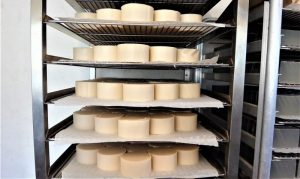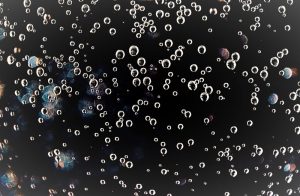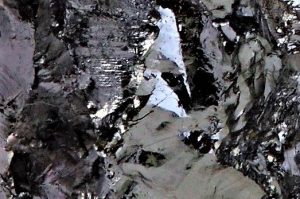Saponification
Within the daily life of human being, many things are used that are known since childhood, but in its majority, we do not know their composition or how they come to be created or formed, for example, women often use sweet perfumes (with fruity odors) or also hair products such as lacquer which in its main composition are the esters. At the same time, different processes or chemical reactions are used, which are the ones that end up giving the final product that is usually used or consumed, for example, with alcoholic beverages such as Vodka or Tequila they make use of the distillation process (where the alcohols are distilled) to give one flavor or another, also soaps use a chemical process called saponification to be elaborated.
What is saponification?
In chemistry terms, saponification is that chemical process performed on fatty bodies in which, joined to an alkali and a quantity of water, it ends up forming soap or glycerin. On the other hand, the name soap is given to all the sodium salts and also potassium salts which arise from fatty acids. Saponification can occur in various substances that, within their molecular composition, store a quantity of fatty acid and normal substances which are called saponifiable lipids, within them, the easiest to find are neutral fats and glycerides, which are found in nature.
About saponification
This is a chemical process used mostly as a method of soap manufacture and it makes use of hydrolysis, which is a chemical process where a molecule is unfolded using water as the main medium.
For its part, to obtain a significant part of the process, hydrolysis is performed on the organic compound “ester” which is found naturally, but it is also a resulting compound formed from a replacement made in an acid, with the replacement of a hydrogen atom by a radical atom of alcohol.
What is saponification for?
Saponification is a very important industrial process with respect to soap manufacturing, since thanks to this chemical process, fatty body that joins with water ends up forming a kind of base paste that ends up ” giving shape” to soap.
Its coloration depends on whether it is worked in a hot way which will give a transparent or opaque color, while if it is worked cold it will have a milkier color.
When they are produced at an industrial level, boilers are usually used in which the fats to be heated are placed. Sodium hydroxide is added to them as they are gradually mixed, the process becomes consistent when a kind of paste is formed and finally the paste is poured into a mold for cooling. (During cooling it hardens and takes the shape of the mold).
Chemical reaction
The main reaction that acts in saponification process is that of hydrolysis in a basic medium, (which is the PH of it) there is a decomposition of fats or lipids in potassium or sodium salts. Apart from glycerin’s.
At the same time, it is necessary to point out that a very important element for the manufacture of the same one is the detachment which is produced by heat, that is why it is sought to apply during the reaction the greatest amount of heat in order to create a higher quality soap.
Saponification process
The manufacturing process of soap on an industrial scale consists of 5 stages from its beginning to its final presentation:
- Soap salting: This is the first stage and takes place during saponification. It is added directly to the boiler a moderate amount of salt in order to reduce the amount of lumps or granules that begins to form.
- Rest or cooled down: During this stage, pasta is stopped being stirred and at the same time it is washed with water in small quantities in order to remove the remaining excesses of salt and alkali.
- Drying process: After the cooling stage is passed through some vacuum drying sprinklers with which the soap paste is left with only 12%, and spheres are created soap bases.
- Additive addition: During the additive stage we add what we perceive as aromatic fragrances, bright colors and some elements in their chemical composition such as glycerin.
- Packaging process: Once the piece or bar of soap is completely formed, it passes through a conveyor belt, which usually wraps it in a waxed plastic or seals it in a vacuum package.
Formula
To be able to develop the effect of saponification we must mainly add an alkaline solution which if placed in written form would be this:
- If to the fatty acid that presents the structure H2COOR we add 3 NaOH that would be the alkaline solution, we will have as result 3 NaCOOR what would be the soap.
Saponification index
When talking about saponification index, it refers to the amount of alkalis in milligrams, specifically potassium hydroxides which are necessary for the saponification of one gram of any of the oils or fats to be treated.
This in turn is different from one to another, and to measure it you must have extensive knowledge of chemistry as it is calculated with complex formulas. That is why there are tables where you can find the indexes of the most used.
Table
Within soap manufacturing, there is a table to know the saponification index of each oil and fat:
| Substance concerned | Saponification index |
| Olive oil | 0,134 |
| Palm oil | 0,141 |
| Castor oil | 0,128 |
| Avocado oil | 0,133 |
| Corn oil | 0,136 |
| Jojoba oil | 0,069 |
| Wheat germ oil | 0,132 |
| Cocoa butter | 0,137 |
| Coconut oil | 0,190 |
| Sunflower oil | 0,134 |
| The oil of sweet almonds | 0,136 |
| Soybean oil | 0,135 |
| Sesame oil | 0,133 |
| Palm kernel oil | 0,156 |
| Beeswax | 0,069 |
| Karite oil | 0,128 |
Alternative methods for obtaining soap
Although this is the most commonly used method, there are other methods for soap manufacturing, such as neutralizing fatty acids found within the soap tonnage, which are treated continuously with caustic soda or sodium carbonate. Unlike the saponification method, in this one no chemical element is lost during its manufacture, but it is usually more harmful to the skin.
In turn, by handling toxic chemicals such as caustic soda, in factories where this production system is used, workers tend to protect themselves more due to the dangers it represents and, in turn, a series of regulations are applied to safeguard the production plant.
Importance
In the daily life of the human being as for personal cleanliness, soaps are an indispensable element in bath sessions. This allows to remove the dirt from the body that is produced when developing activities of daily life and also by different activities that the body performs such as perspiration, which when accumulated generates bad odor.
How to cite this article?
Briceño V., Gabriela. (2019). Saponification. Recovered on 4 January, 2025, de Euston96: https://www.euston96.com/en/saponification/










